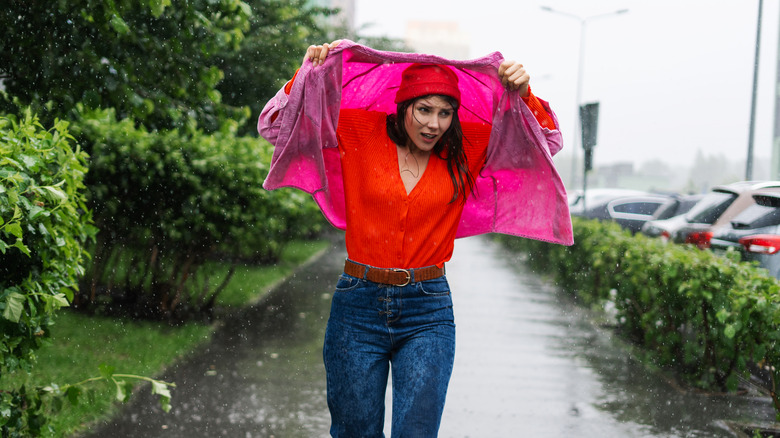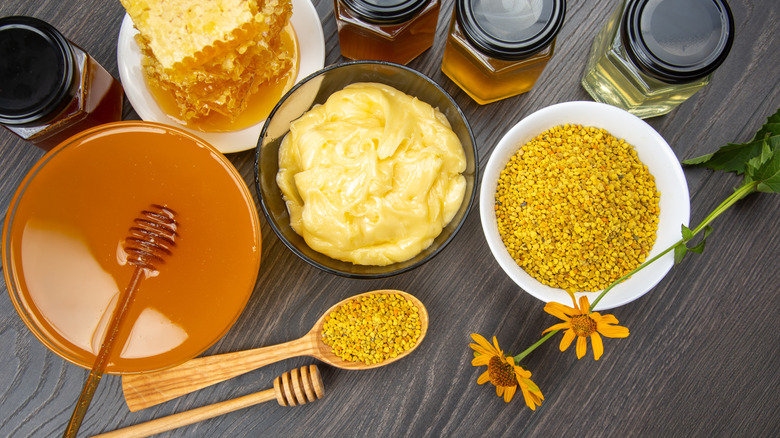The Simple, Affordable Method To Waterproof Clothes And Luggage For Travel
We may receive a commission on purchases made from links.
If you've spent any time hiking, cycling, or trekking in drizzly climes, you'll know that many things which claim to be waterproof aren't. Even Gore-Tex, the gold standard of waterproof fabrics, isn't without its faults. Some products are now sneakily branded as "water resistant" or "water repellent," which is just marketing speak for "leaky." This is no trivial matter. There are few things worse than waking up in a cold mountain lodge, donning a wet T-shirt, and squelching into freezing boots wearing rain-soaked socks. So finding ways to really waterproof your gear is vital — if not for survival, then certainly for enjoyment.
Aside from trusty bin bags and plastic ponchos, both of which do a surprisingly good job, there's another waterproofing solution that's growing in popularity. Not only does it work, but it's also affordable and environmentally friendly. And that's the all-natural, antibacterial, antifungal super-product that is beeswax.
Extracted from the honeycomb of the honeybee, beeswax has been used as a waterproofing agent and sealant for millennia. The ancient Egyptians used it in the mummification process, medieval scribes sealed documents with it, and craftsmen throughout the ages found it could preserve wood, metal, and leather. If beeswax is good enough to prevent a body from decaying despite 4,000 years of nature's best efforts, then it should be good enough to keep your underpants dry. Alongside homemade bug spray and emergency whistles crafted from acorns, beeswax is a necessary hack for improving your outdoor adventures.
How to use beeswax on your clothes
In an increasingly sustainability-conscious world, beeswax is a hot topic because it's renewable, biodegradable, and not carbon-intensive to source. Beeswax wraps often appear on store shelves and at farmers' markets, serving as an alternative to single-use plastics like cellophane. Cosmetic companies are also marketing products where beeswax is a primary ingredient, while candlemakers value the product for its long, clean burn and natural fragrance.
To use beeswax on your clothes or bag when traveling, it works best on natural fibers that absorb the wax. Simply heat a bar of it with a hairdryer or melt beeswax pellets using the bain-marie technique. Then apply it generously to both the fabric and seams, after which you'll want to leave your items to dry for about 24 hours, preferably in the sun, but a closet or broom cupboard will also work. If an item feels stiff, this means it has been well waxed and is therefore well waterproofed. Pliability will return after a period of use.
Beeswax pellets are available on Amazon; some sellers offer a couple of pounds for less than $20. Khül Wax, which comes in bar form, is another popular beeswax product for less than $20, blending the wax with other plant-based ingredients. A beeswax-and-plant blend called Otter Wax has also been designed specifically for waterproofing fabrics. At $19.95 for a five-ounce bar, and with almost unanimously positive reviews, it's a great value option. For the ultimate waterproofing, pair the beeswax with a canvas tent built to handle any weather or one of the best waterproof purses on the market, and those soggy mornings will become a thing of the past.

